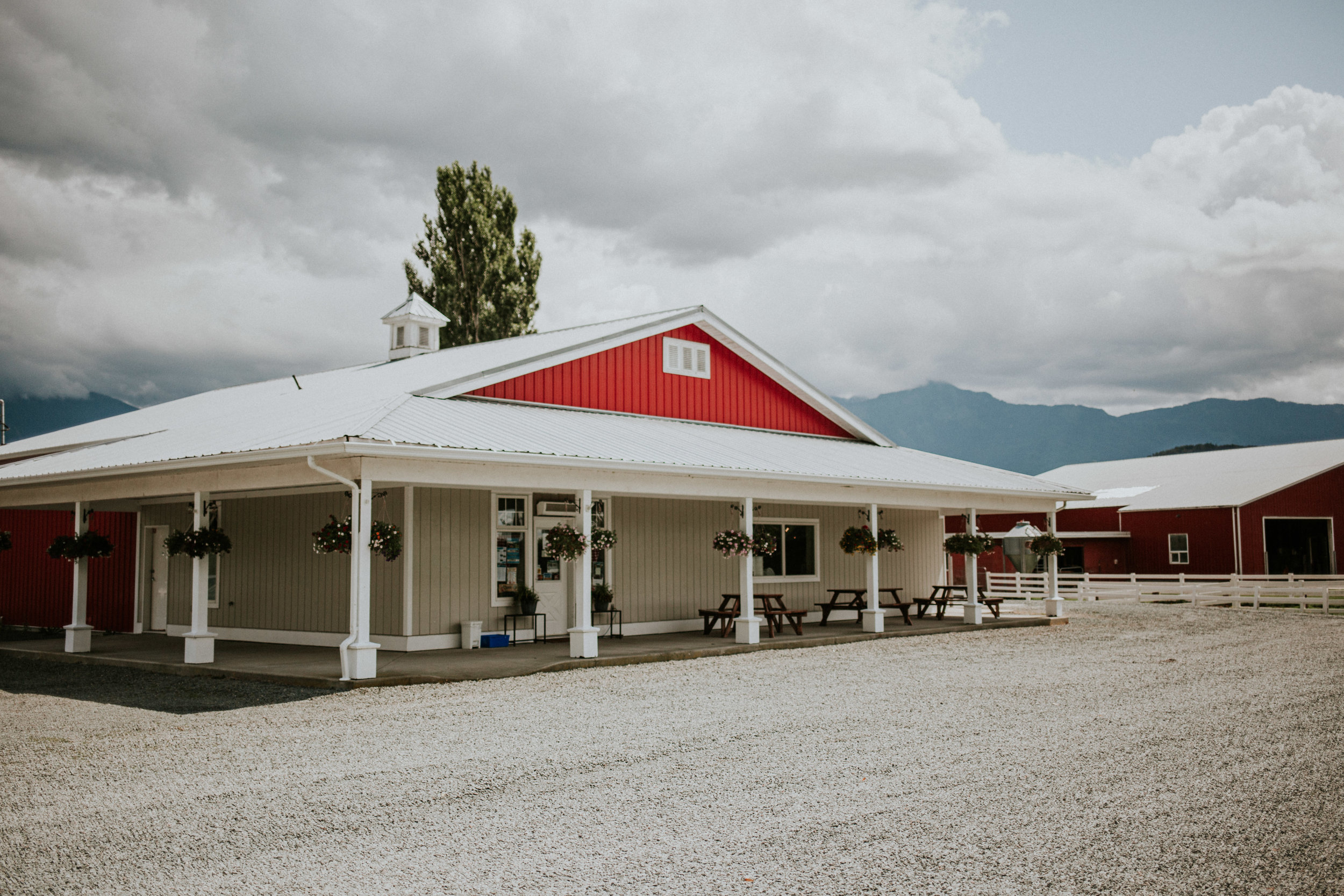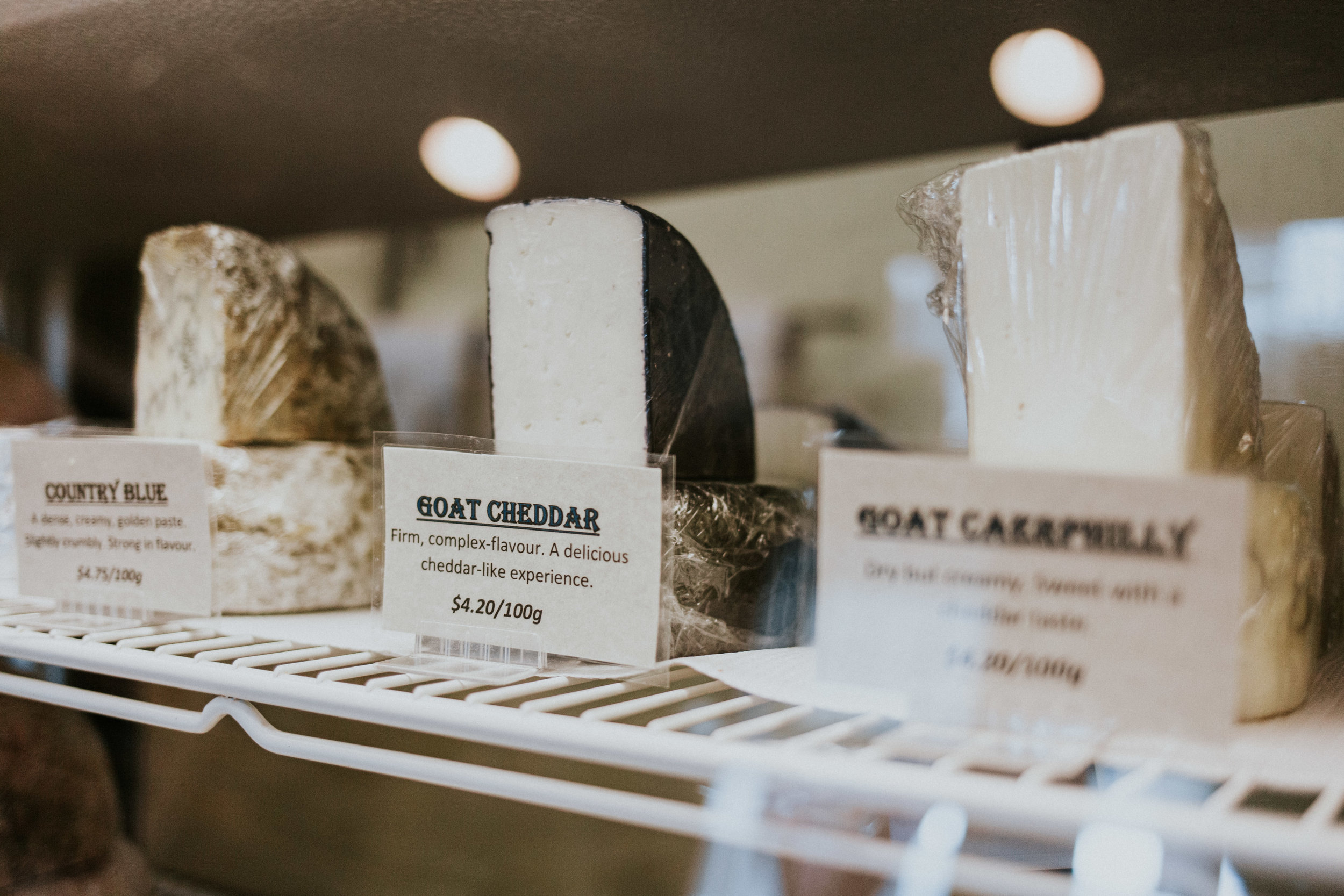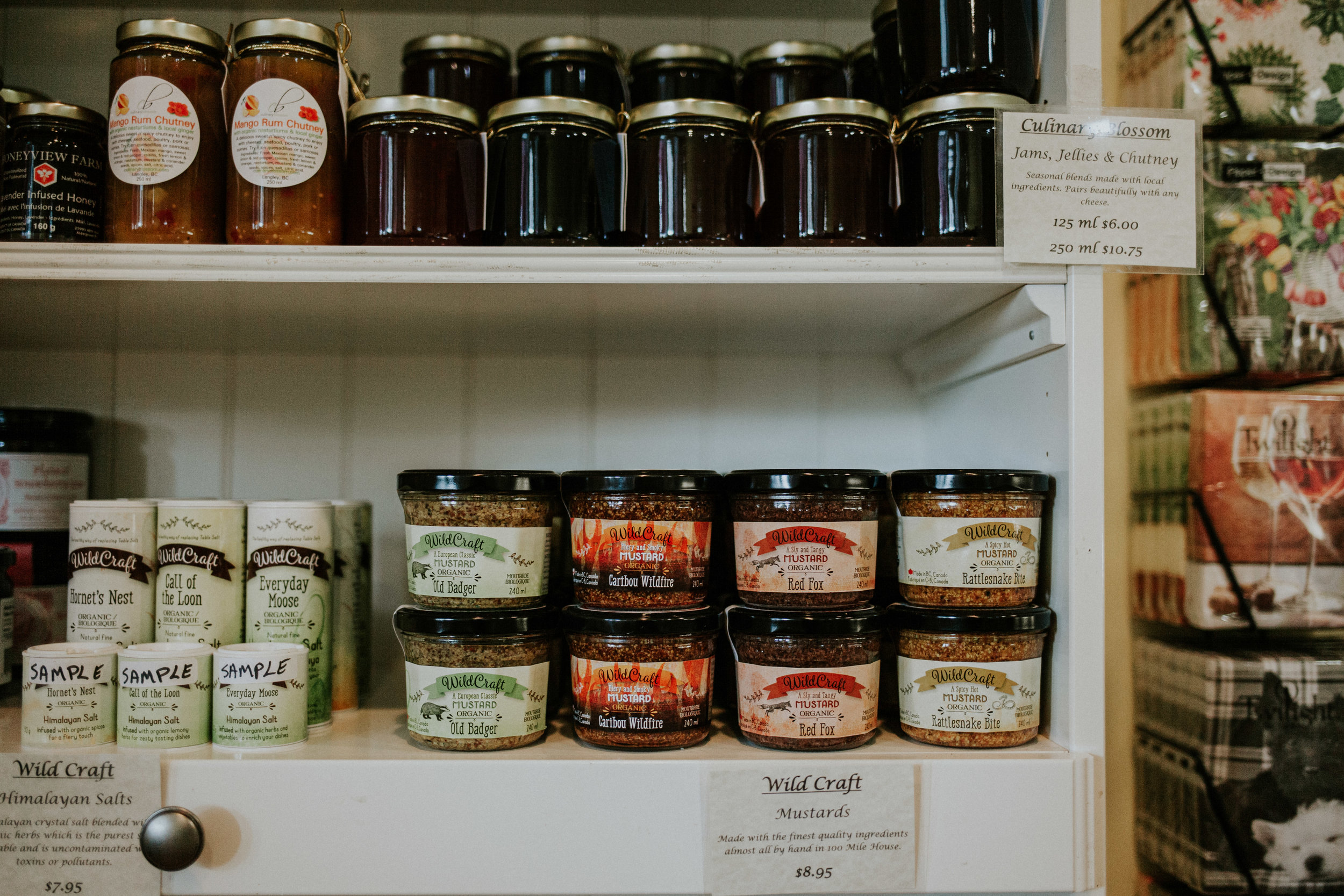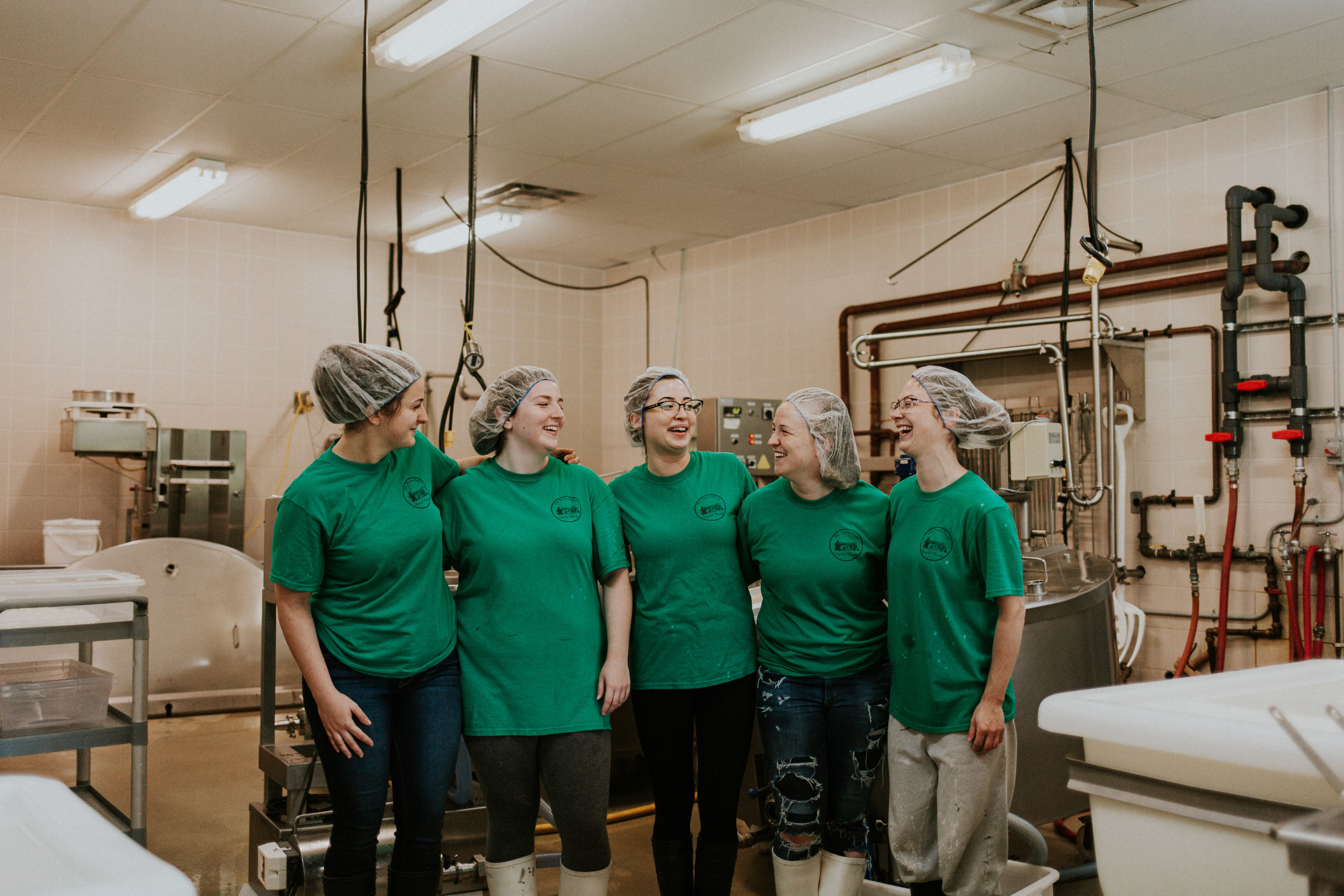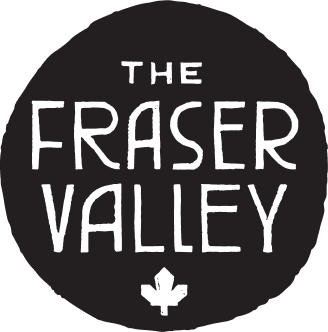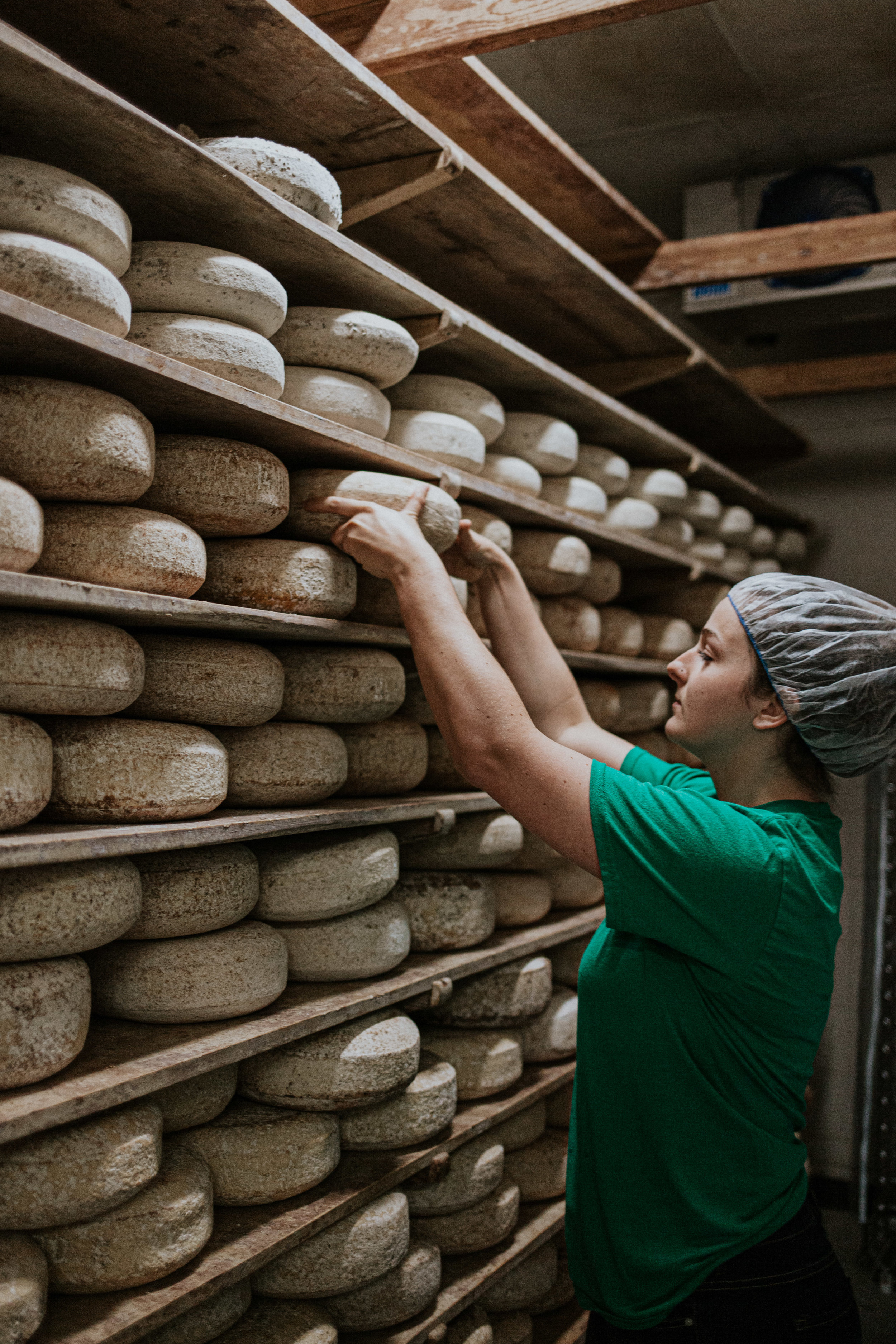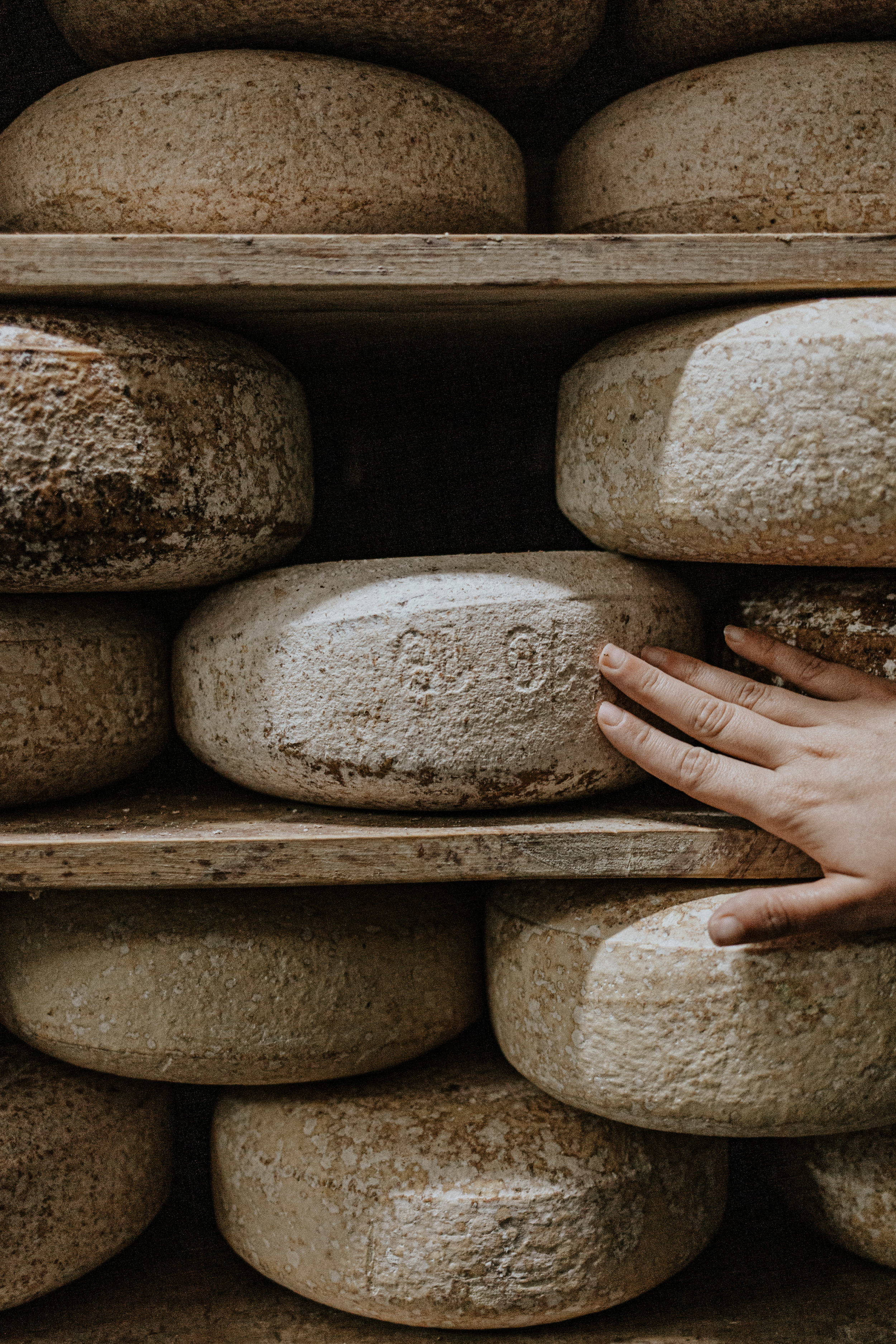Located on a quaint property in Agassiz, The Farm House Natural Cheeses have become a staple for cheese connoisseurs in the Fraser Valley. Their award-winning artisan cheese can be purchased right on their property or at numerous retailers throughout Greater Vancouver, Vancouver Island and the Valley, such as Lepp Farm Market in Abbotsford and Local Harvest in Chilliwack. We were lucky enough to a get a behind the scenes look at their cheese making process when we stopped by the farm recently!
When you visit The Farm House you’ll likely be greeted first by the curious goats who stick their heads through the fence to say hello, they’re almost always stationed near the front of the property to give customers a warm welcome! When it comes to cows, The Farm House is home to more traditional breeds, such as Guernsey, Brown Swiss and Jersey. This differentiates them from most other dairy companies who work mainly with milk from black and white Holstein cows.

What sets these cows and their milk apart? The milk that is associated with these breeds has also been linked to having an A2 protein beta-casein, as opposed to the A1 protein beta-casein which is typical of Holstein cows. Although the milk used by The Farm House is not fully certified A2, they informed us that many of their customers who have had issues with dairy in the past rave about products, saying that they are much easier for them to digest, which is a common property of A2 quality dairy.
Another thing that characterizes their high-quality dairy products is that the animals graze on the grasses and flowers in their pastures for up to 210 days out of the year, when the grass holds plenty of nutrition to be able to sustain their diets. The beautiful rich golden colour seen in Farm House butter and cheese is due to the high levels of beta-carotene found in cow’s milk which is a direct result of their diet of fresh green grass!
The plant manager of The Farm House gave us a look at the cheddar curd making process, which he said is “typically a 10-12 hour process from the moment we receive our milk from our farm on site, to the time we are putting the curds into molds to be pressed into wheels. All of our cheeses are made with fresh pasteurized milk and takes several steps to complete.”
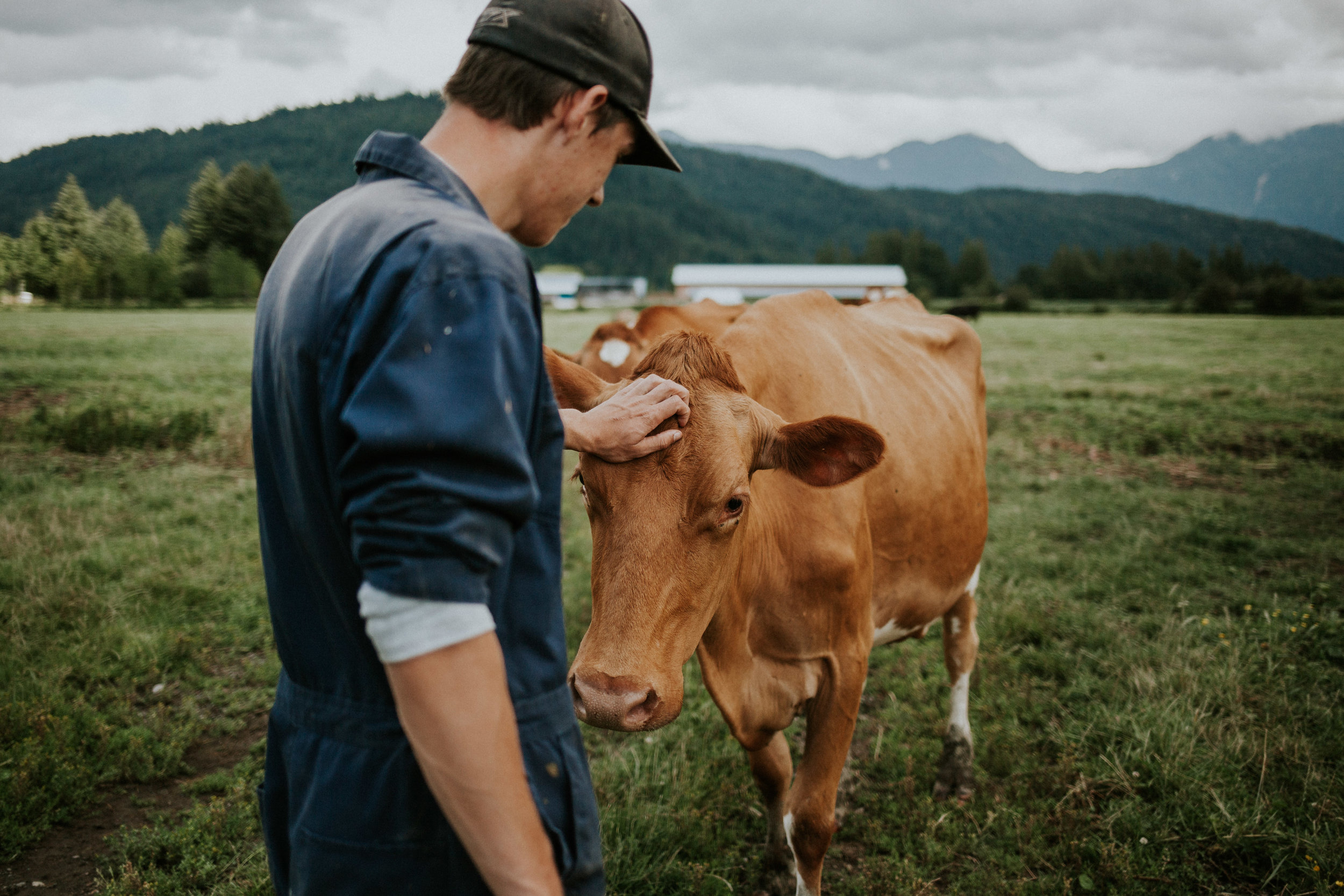



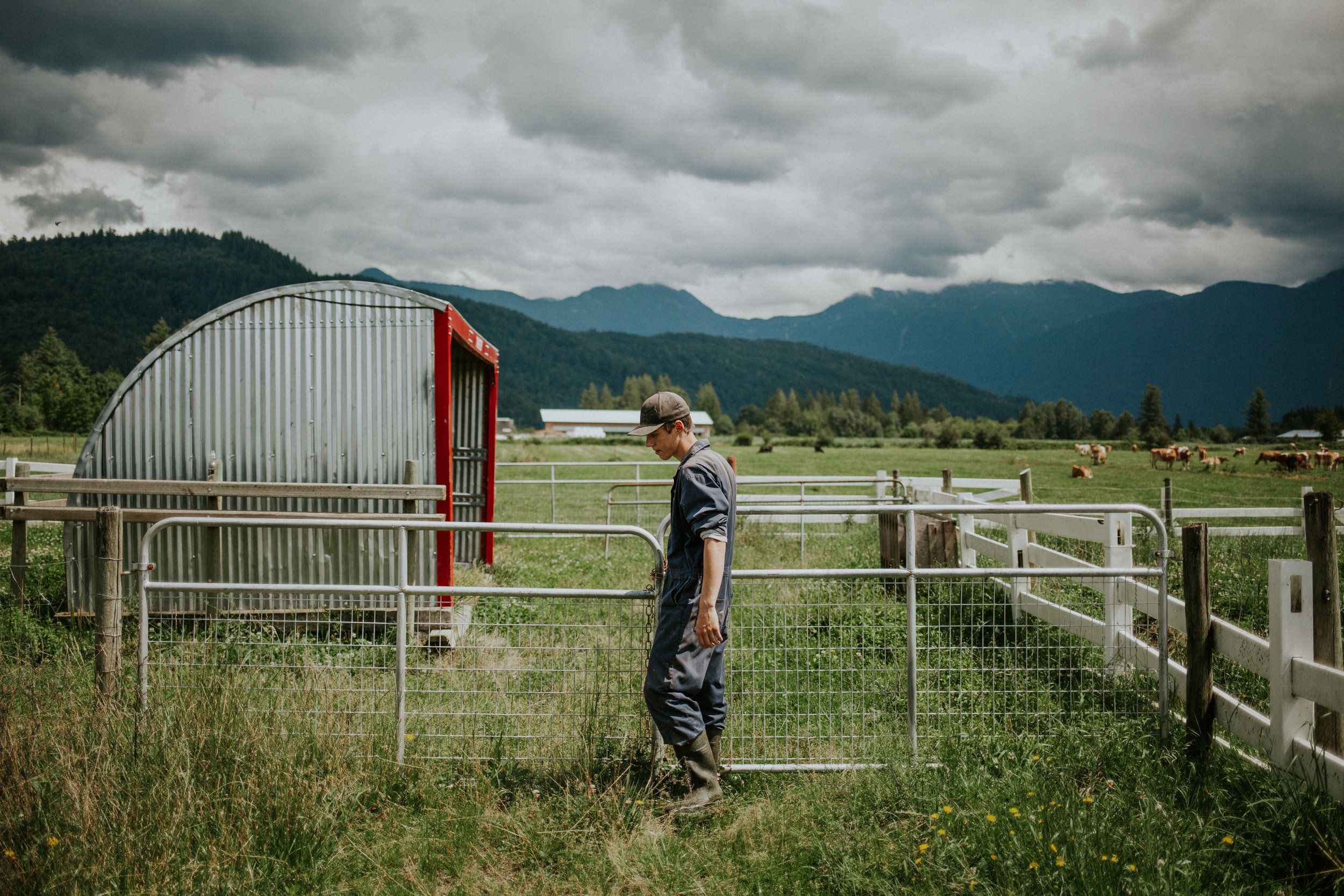

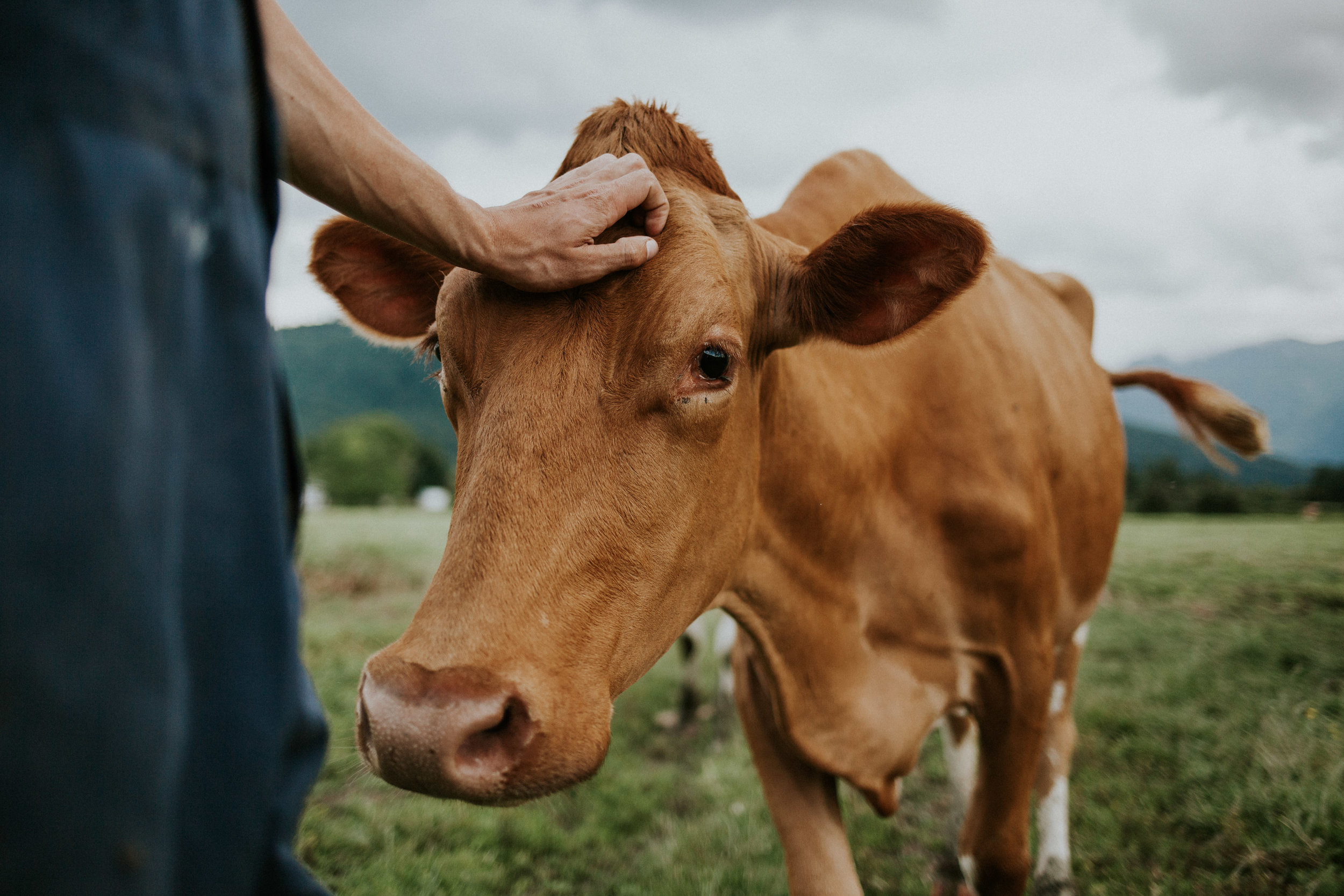
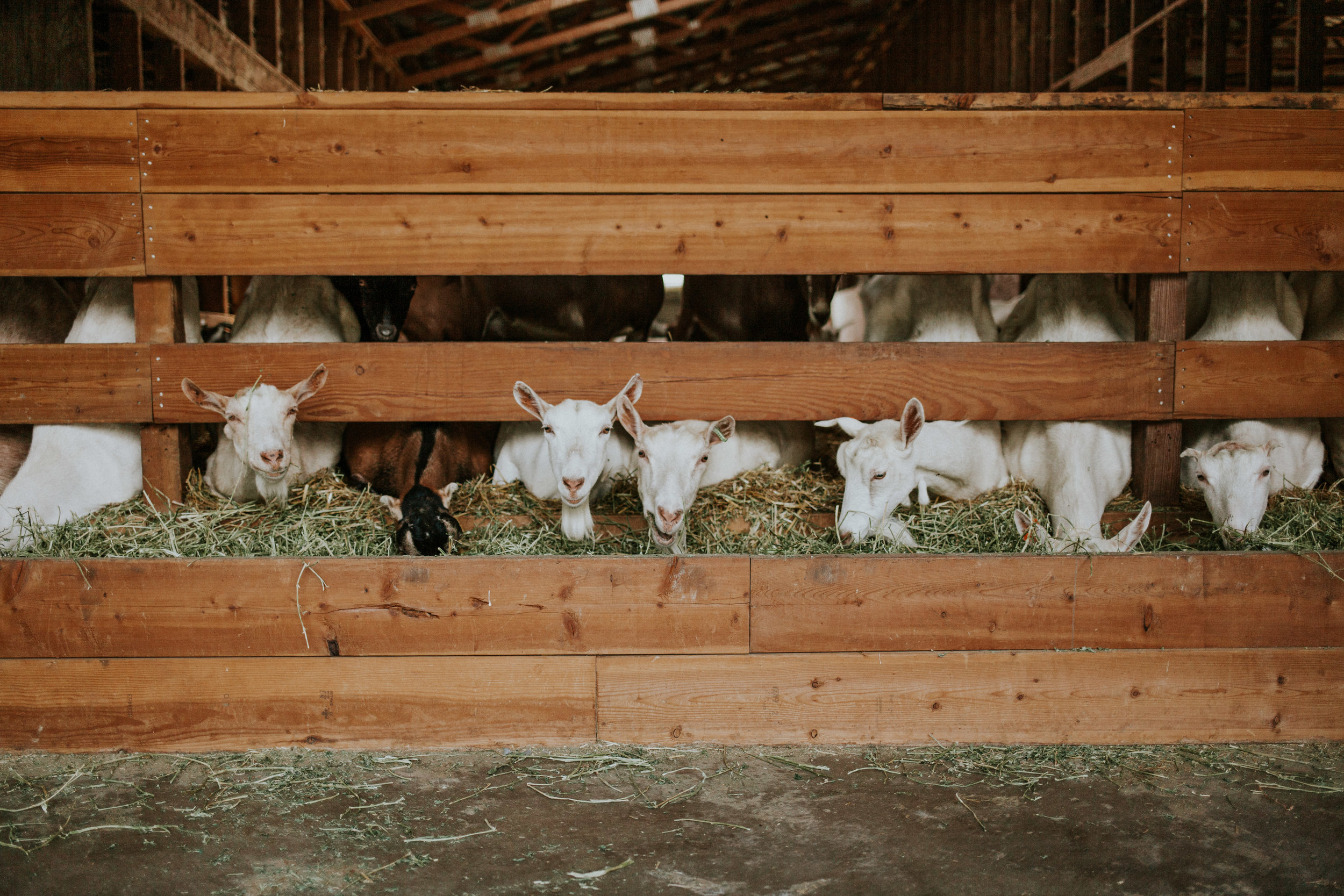
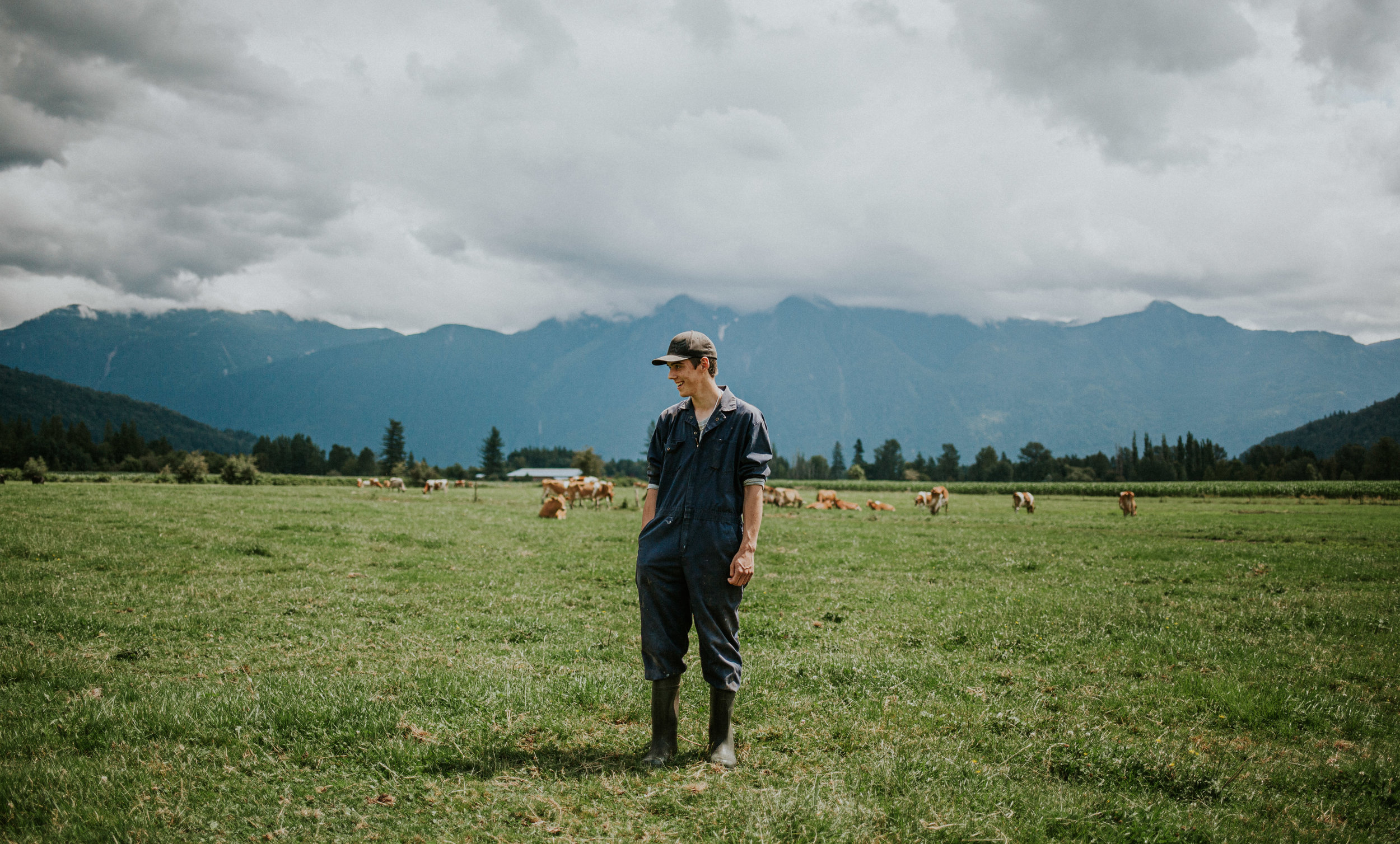

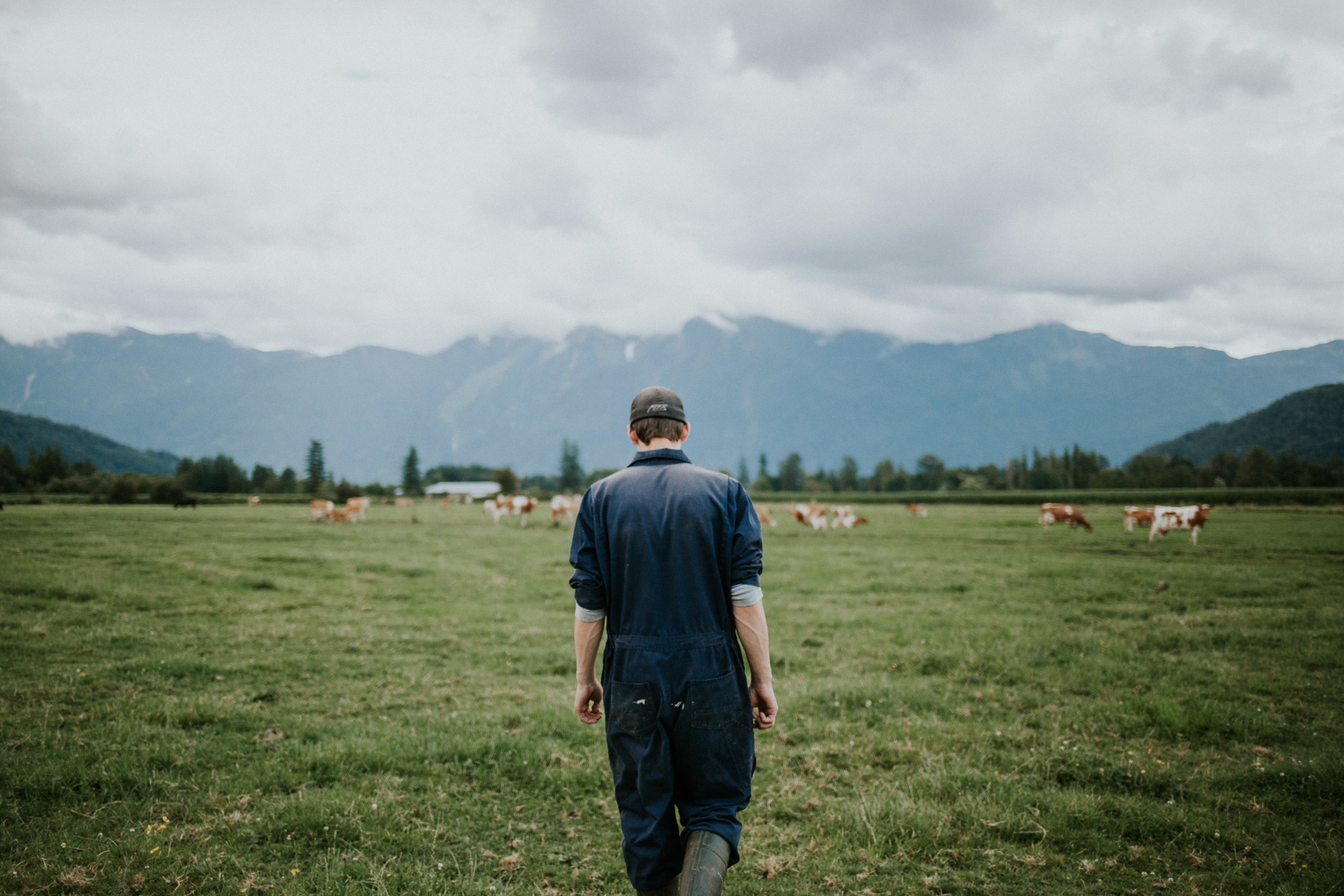
The first step is adding cultures to the milk to acidify it and help to develop the flavour; once the milk has ripened they add rennet which coagulates the milk and turns it into curds. Next, once the curd is set, it is cut into smaller pieces using long knives. They continue to cook and agitate the curds to change the texture and expel the whey from the cheese. After the cooking process is complete the curds settle to the bottom of the vat, which creates slabs. The remaining whey is drained away and the slabs are milled through a cutting machine. Finally, salt is added for flavour and preservation and the curds are taken out and packed into large cheddar molds. The molds are placed under a large cheese press and are left overnight, which encourages the curds to press together and form into large wheels. Loose cheese curds that are not put into moulds are bagged and packaged for sale in the shop and at the markets they attend. Curds are kept at room temperature for 24 hours before being refrigerated, which is the time needed for the cheese to become famously squeaky!
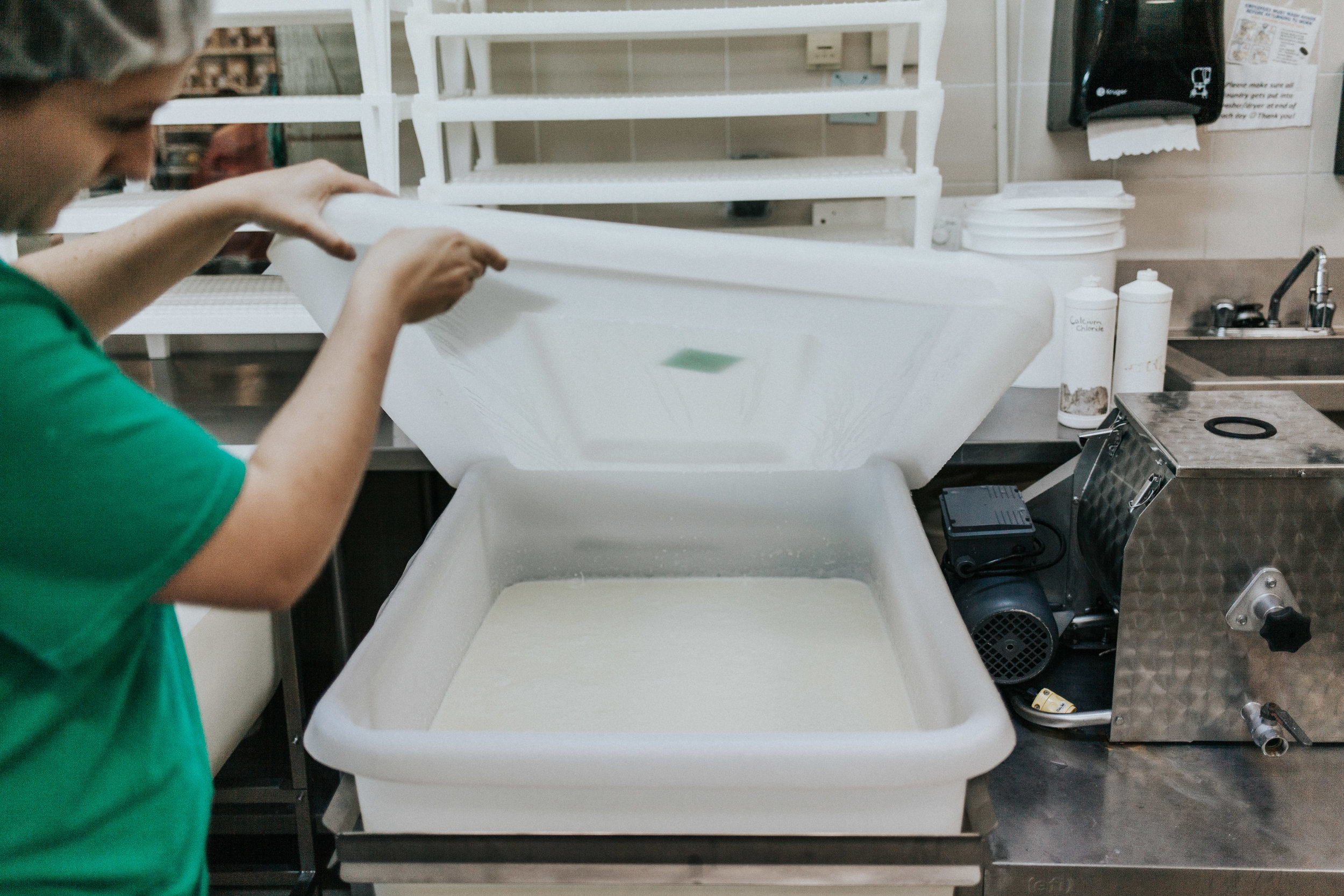

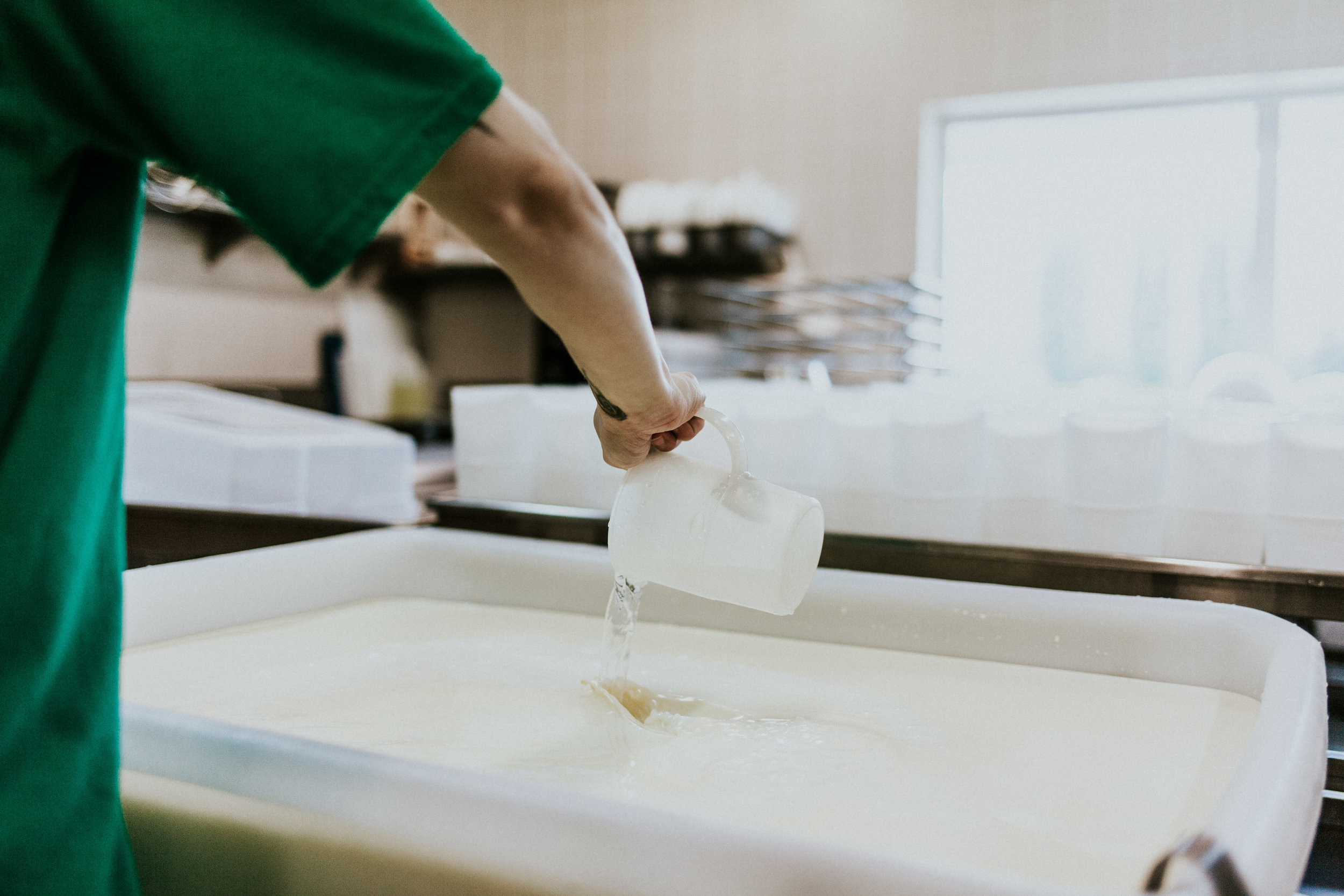
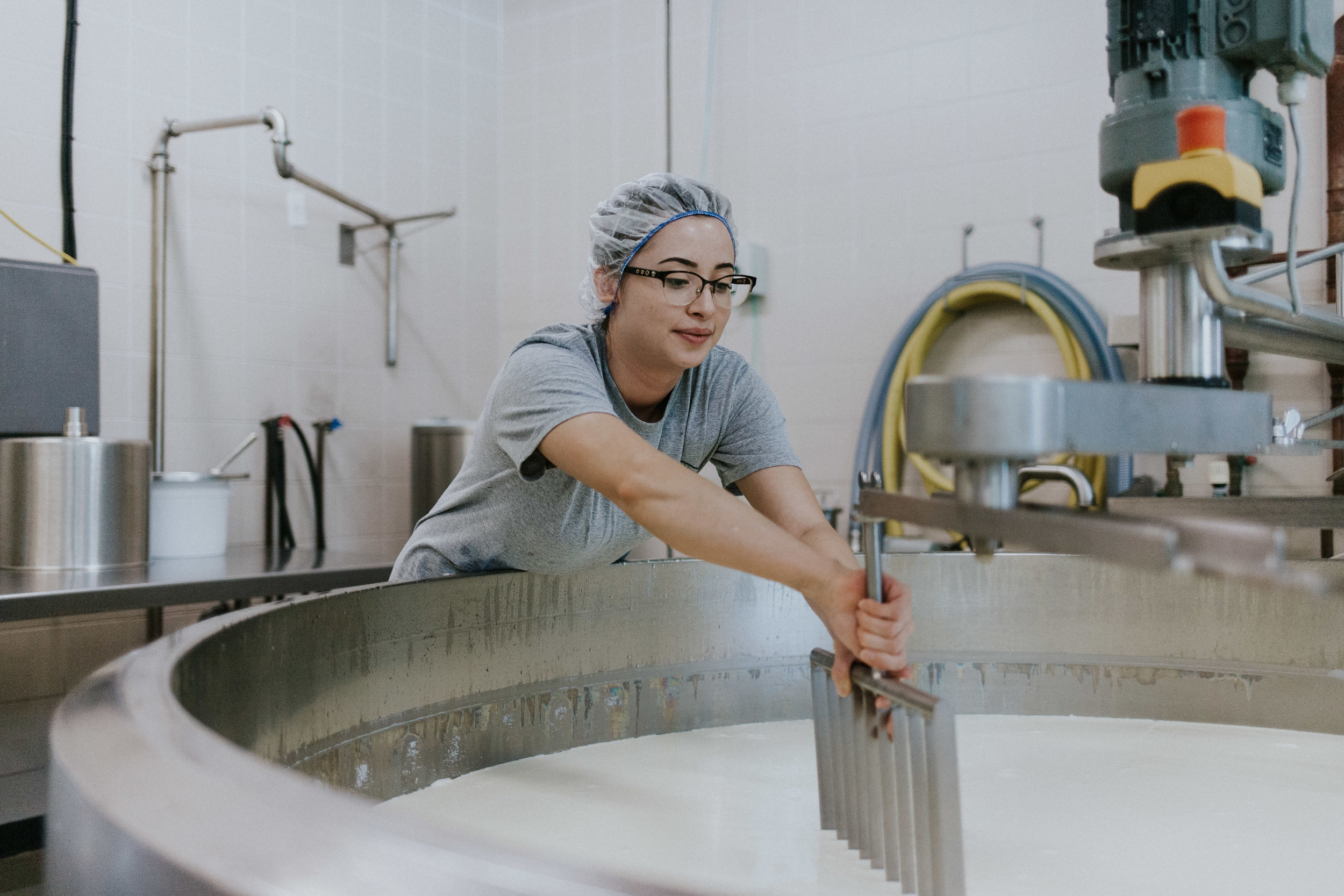

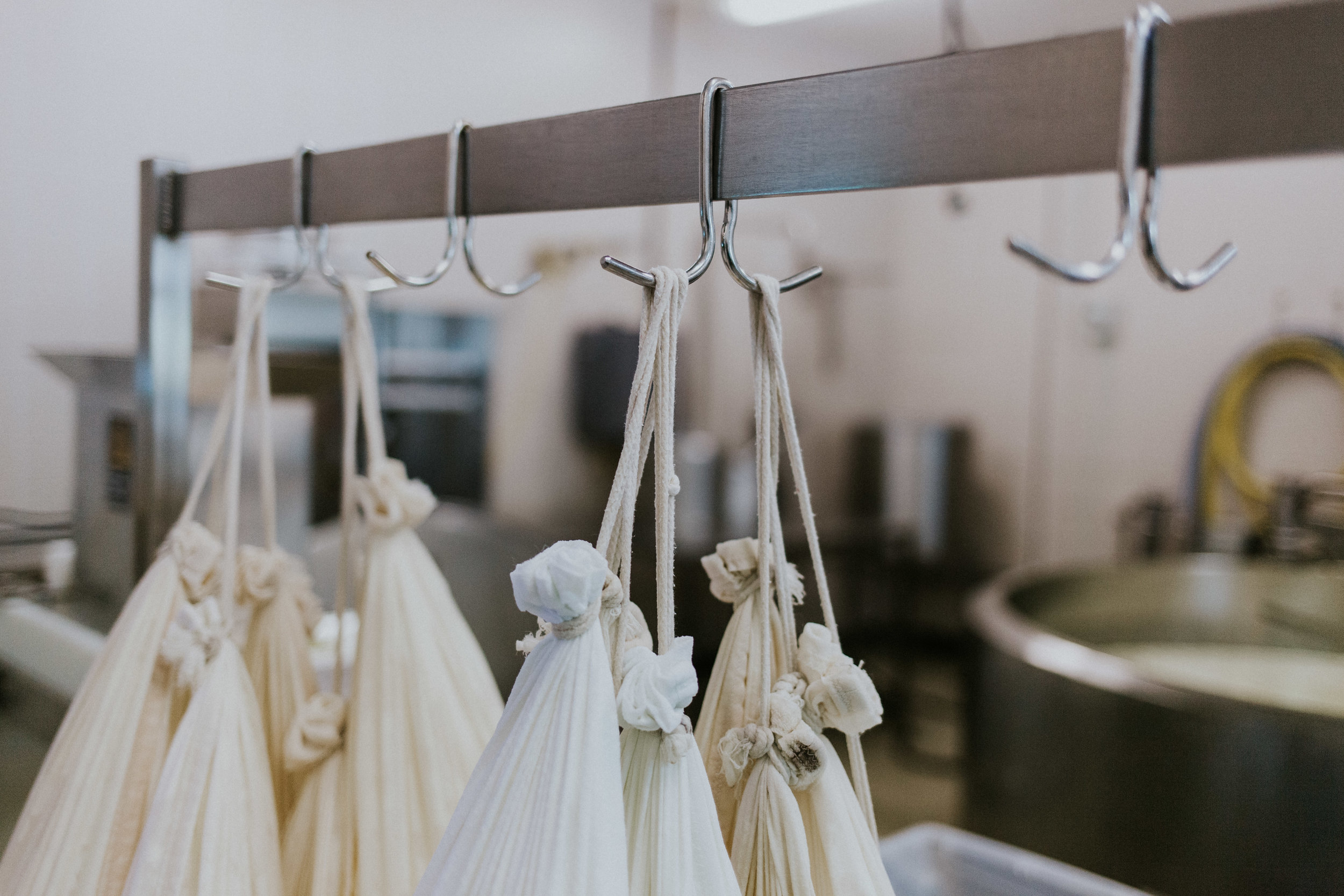

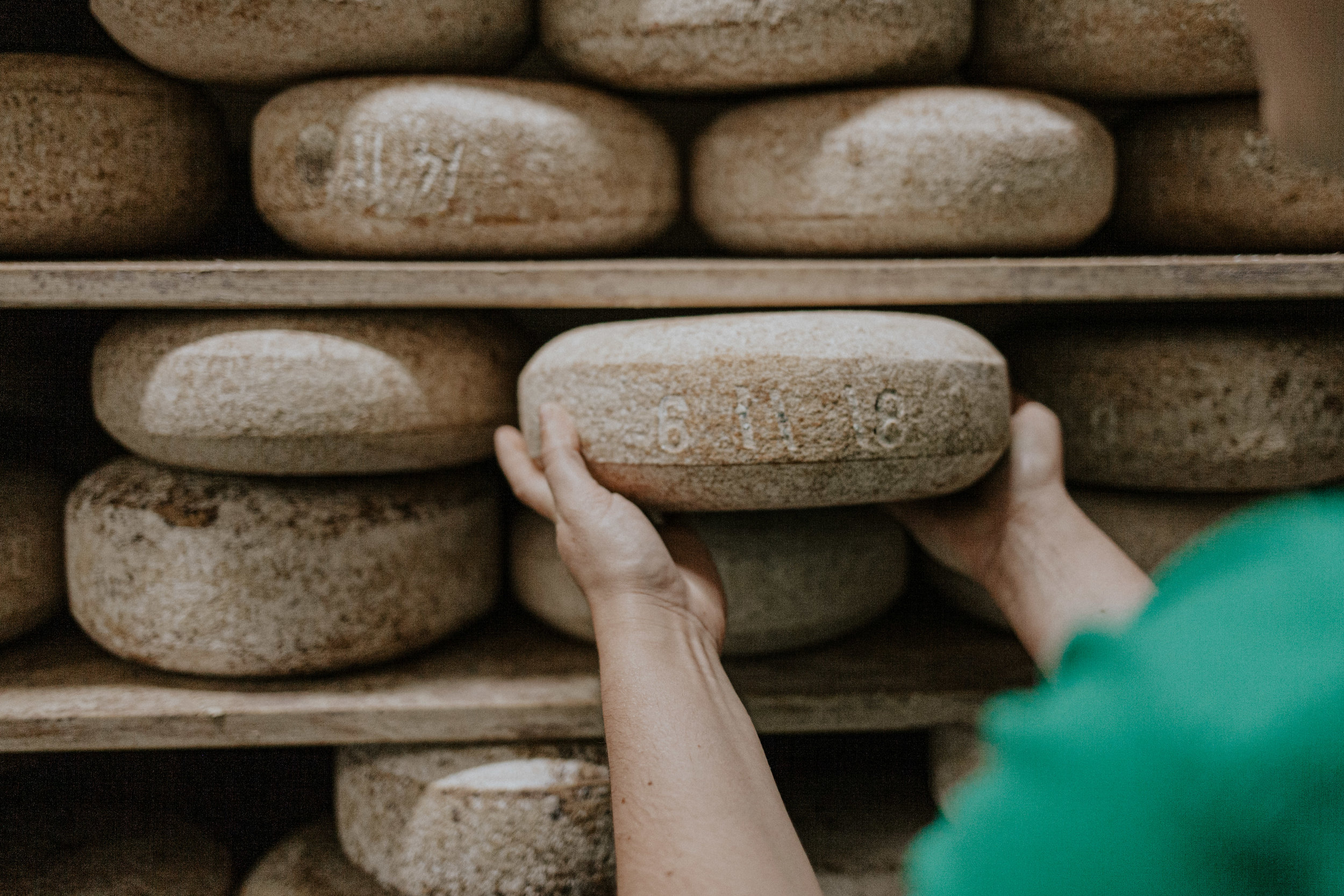








The Farm House Natural Cheeses is open Monday to Saturday from 10:00 AM until 5:00 PM and offers a wide range of dairy products including butter grass-fed butter, yogurt, milk, and a variety of goat and cow cheeses. In the on-farm cheese shop you can sample and purchase all the different varieties of cheeses as well as traditional Greek style yogurt & bottled cows and goats’ milk. The milk is delivered directly from the dairy to the cheese room daily, where you can look in on the cheese-making process.

